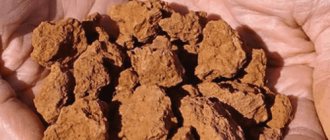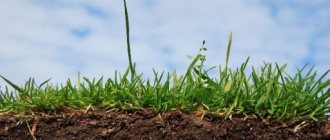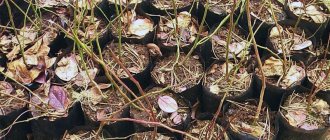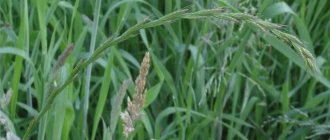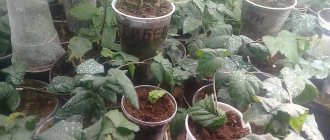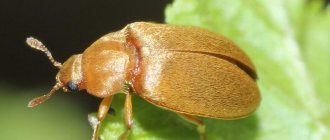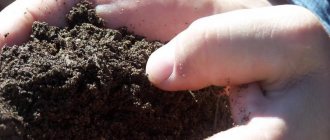- Application of black soil
Yes, the land can become fertile without the introduction of harsh chemicals, when working with organic matter alone. Of course, physical activity will not be significantly reduced, but the summer resident will be confident in the environmental purity of the grown products, reducing financial costs, and also improving the quantitative part of the harvest.
It is worth putting aside all the concepts of hydroponics, genetic modification, and complex fertilizers. This can be left for later, when we talk about additional chemistry and modern techniques to quickly increase the yield. The topic is useful, but its activation is interesting in terms of industrial scale cultivation of crops. If you want to get high-quality potatoes, tomatoes, corn, peppers, cabbage and other necessary products for yourself, and not for sale, you will have to act in slightly different ways!
Soil input data
You shouldn’t immediately after purchasing a summer cottage, or as soon as you decide to plant a vegetable garden, bring in tons of humus and pour buckets of superphosphate and nitrogen into the ground. This will not lead to positive results, because oversaturation of the fertile layer with various kinds of chemical elements can play a cruel joke. You can get reactions that are completely explainable by natural processes - rapid forcing of greenery, burned root system, lack of ovary, premature wilting, rotting of fruits and others!
To avoid such negatives, you need to initially determine:
- Mechanical composition of the soil. Classification into three groups - sandy-sandy loam soils, loam, light or medium, and heavy loam or clay soil. A simple agronomic test is being performed! A handful of soil is mixed with a small amount of water and squeezed well in a fist to remove excess moisture. Now you need to roll the resulting mass into a sausage: if it falls apart, the soil in the area is sandy-sandy; if it rolls but bursts, it’s loam; if it’s possible to roll the sausage into a ring without visible damage or cracks in the shape, it’s clay!
- Reaction of the soil environment. Also classified into three groups, namely acidic soil, neutral and alkaline. The most appropriate soil for the predominant number of garden plants is neutral soil - pH 6.5-7.0. Determination of the reaction is carried out by simple analysis, using a special kit for gardeners. A ready-made test with indicators can be purchased at any specialized store!
Plant long-rooted plants
Green manure is what experts call crops that have a long root system and have the ability to fertilize the soil. Planting long-rooted plants is a favorite way to fertilize and loosen the soil of those who deny any chemical effects on the soil and vote for organic farming.
The beauty of green manure is that their roots contain so-called nodule bacteria. They are engaged in fishing nitrogen out of the air and actually saturating the earth with this nitrogen, binding it and holding it in the soil. The powerful root system of plants, which are green manure, loosens the soil, saturates it with oxygen, that is, it actually aerates it, and not only in the top layer.
Planting green manure to loosen the soil is especially effective on peat soil, as well as on heavy types of soil.
If you want to use this method of loosening the soil at your own dacha, plant legumes. They belong to the category of green manure. In addition to them, you can plant lupins in the beds - beautiful green manure flowers that will add an aesthetic component to the landscape design of your garden plot, and at the same time fluff up the soil. You can also use green peas or alfalfa for this purpose. The effect will be similar.
Neutralization of acidic soil
- In arid areas, alkaline soil is more likely to be detected;
- If chernozems predominate in the region, their indicators will be neutral;
- In regions around which there are many rivers, peat bogs and swamps, the soils are acidic!
© d-collection-shop.ru
Plants grow poorly on soils if their values are above pH 7.5 or below pH 5.0. Crops are susceptible to diseases, pest oppression, and poor development in general. Accordingly, even if there is a harvest on the site, it will be quite weak. To a greater extent, this applies to sensitive crops, including lettuces, beets, cabbage, onions and cucumbers.
- Excessive acidity from the soil is eliminated by adding ash, dolomite flour, ordinary chalk or lime;
- To change the alkaline soil to a favorable level, the soil is gypsumed - the addition of ground gypsum!
The compositions are applied to the soil from 100 g/m2 to 300 g/m2, depending on the severity of deviations from the main indicators of neutral soil. The best period for work is autumn and spring. The process is strictly on clean soil. Scattering the selected substance manually or using special equipment, and then digging up the soil on the site so that chalk, gypsum or ash fall to a depth of 15-25 cm. Application is carried out once every 4-5 years to constantly maintain the desired level of acidity!
Improving the mechanical composition of the soil
The following four conditional modes are required: thermal, nutrient, water and air. If the soil is moderately warm and moisture-absorbing, has the ability to absorb and release nutrients, and also maintain air exchange, this is an excellent result. More often, light and medium loam has such indicators!
If the soil is clay or sandy, it is almost impossible to provide four favorable factors at once, and the plants grow out of balance, which leads to numerous problems!
Light soils on the site
Light soils do not have the best performance due to the rapid loss of water, which also removes nutrients. Accordingly, in the fertile layer, which is about 20 cm, there is no nutrition left for the plants. On the other hand, light soils warm up quickly and retain heat well and have high-quality air exchange.
To stabilize the soil, it is made heavier by adding clay, and the moisture capacity is increased by humus fertilizer. It is good to use compost to increase the nutritional content. Be careful with peat, which can increase the acidity of the soil.
Heavy soils on the site
Heavy soils are characterized by good nutrition, but stagnation of water and waterlogging have a negative impact on growing plants on such soil. For this reason, the root system suffers significantly, which can even rot.
Nutrient organic matter is poorly dissolved in the structure of heavy soil, and the work of beneficial microorganisms is poorly visible. Warming up of the soil takes longer, and in the spring there is stagnation of melt water, which is why planting of crops occurs with a delay, which also negatively affects development!
The structure of the soil can be changed by mechanical loosening and the introduction of special loosening materials. Sand and sawdust, which are added in spring and autumn, respectively, have performed well. Another popular way to improve soil quality is to plant green manure, the root system of which is quite deep!
Mulch with grass clippings
Slow-release fertilizer is a type of soil loosening agent. There are many fertilizers that belong to this type. But mowed grass, or rather the use of such grass in the form of mulch, is the most relevant way to naturally loosen the earth in the framework of our conversation today. You can use mowed grass from early spring to late autumn. Its use is limited only by weather conditions when the ground freezes and it is not possible to dig it up. There are no other restrictions in this case. Listed below are the main goals that can be achieved by using grass in the form of mulch.
- The grass will help retain a large amount of moisture in the ground and significantly reduce the amount of evaporation.
- The grass will decompose slowly, step by step, and your beds will be provided with fertilizing throughout the entire period of decomposition of the mown grass.
- After such mulching, the earth will be saturated with oxygen and become looser.
Mulching with grass clippings is ideal for clay soil. This additive will significantly soften even very heavy soil.
Application of black soil
High-quality fertile soil can be brought to the site. But is this really rational?
There are quite a few advantages, because if you cover heavy clay soil with a 20 cm layer of black soil, you will notice the effect already in the first year. But there are also many disadvantages of such an enterprise:
- Exhausted soil from suppliers, which at first glance cannot be distinguished;
- Mandatory financial costs for the purchase of material, as well as its delivery and layout throughout the site;
- Depletion of the soil and its leaching, decomposition within 3-5 years, that is, loss of primary positive qualities.
It is necessary to make accurate calculations taking into account the life of the chernozem, the gradual loss of quality annually, as well as indicators of increasing productivity. Often, the delivery of black soil to the dacha turns out to be irrational!
Coconut substrate for seedlings
Recently, gardeners have begun to actively use coconut substrate for soil for seedlings. In Russia, soil appeared relatively recently, only 7-8 years ago, and has become quite popular among gardeners. This is a modern, environmentally friendly product, a convenient replacement for soil or an additive to it. It is a coconut husk product and is made from the leftover coconut husks. It consists of 30% coconut flakes and 70% coconut fiber.
Coconut substrate creates an ideal breathable environment for the development of a healthy root system, which increases productivity and resistance to various diseases. It is free of any pathogenic microorganisms. Can serve as a component for loosening heavy clay soils and increasing the moisture capacity of sandy soils. It is also suitable for mulching and protects the soil from overheating and drying out. Read more about coconut substrate.
To grow seedlings, the substrate can be mixed with peat in a 1:1 ratio. If you decide to grow without peat, in this case it is necessary to carry out additional fertilizing with a weak solution of fertilizers.
To prepare soil from coconut substrate, you need to know that 1 kg of substrate is designed for 15 liters of water. Therefore, first carefully read on the packaging how many liters of water the package is designed for; this is indicated on the label.
The soil is very easy to prepare. Prepare in advance a basin or bucket with a capacity of at least 10 liters, warm water and the briquette itself. To obtain 4 liters of soil you will need approximately 1.5 liters of warm water. Place the briquette in a bucket, fill it with water and leave for 10-15 minutes to swell. During this time, the substrate will absorb water, increase many times in volume, and become loose and airy. It can be used in its pure form or as an additional additive to the main soil.
Applying cow manure
Fresh cow dung is not as healthy as many newbies believe. It can even be harmful if used incorrectly, for example, applied under the roots of plants, which the manure will simply burn. This popular fertilizer is not so rich in nutrients, but it contains many pathogenic organisms and plant seeds, mostly weeds, that have not been processed by the animal body. Fresh cow manure is processed into humus before being applied to the soil. It can be applied fresh only a year before planting, or at least in the fall, after digging up the beds!
Universal soil with vermicompost - how to make it yourself
Organic matter in the soil is the most important condition for obtaining a decent harvest, especially at the stage of growing seedlings. In stores you can buy horse, chicken, and cow droppings. This is the same manure, but processed and in the form of granules. The use of such fertilizers is not always convenient, since they are granular. Therefore, it is much more convenient to use vermicompost for these purposes.
Many ready-made soils that are sold in stores are made from peat, and they are poorly nutritious, as they contain little organic matter.
Vermicompost is an organic fertilizer processed by worms. When worms pass organic waste through themselves, they disinfect it and convert all organic components (nitrogen, potassium) into a more digestible form, enveloping it in a film of calcium. This allows the fertilizer not to be washed out of the sandy soil, but to work for quite a long time, up to 5-6 years. Vermicompost contains up to 30-35% humic acids, which is 5-7 times more than in chernozem.
With a lack of organic fertilizers, after 2-3 weeks you can notice that the growth of seedlings has stopped, the leaves begin to turn pale, and the plant itself begins to wither. Therefore, when planting seeds of peppers, eggplants, tomatoes, cucumbers, it is very good to add at least 20% vermicompost to the soil. This will provide additional nutrition to the plants. That is, to 10 liters of soil that you have already prepared, you need to add 2 liters of vermicompost, mix and plant seedlings in such soil.
A universal soil with the addition of vermicompost is vermicompost. The seedlings planted in it develop well, the leaves have a healthy green color, and the plant develops well.
Fertilizing the land with peat
It is more correct to use peat as one of the parts of complex compost. The material is saturated with nutrients, but their level is insufficient. Thus, you need to take into account the acidity of the product and its effect on the soil, be sure to understand the types of peat, and be able to identify them when purchasing. In any case, it is not advisable to use pure peat; it is better to prepare high-quality peat-containing compost using it, correctly regulating the required amount of nutrients with the various components of the compost!
Fertile soil in the country: additional recommendations
It is very difficult to come to a consensus on replacing the fertile layer, fertilizers, and soil care rules. Summer residents from different regions of the country, as well as neighboring countries, share their own individual developments on forums and websites. Therefore, if you use them, then with certain corrections, taking into account the quality and characteristics of the soil on your suburban area. But the main idea should be adhered to, since the soil is loosened, fertilized, and prepared for planting, regardless of the region, climate, or mood of the summer resident!
- Planting and using green manure. A popular and inexpensive way to significantly improve the structure of the soil and fertilize it. Rye, oats, clover, lupine, alfalfa are sown along the beds, after mowing they serve as covering material, mulch, and at the end of the season they are buried in the soil, thereby becoming useful and practically free organic fertilizers;
- Mulching the soil. You can use mown grass, wood chips, green manure, brushwood after passing through a chopper, gravel, expanded clay, pebbles and many other materials as mulch. Mulching, in addition to improving the landscape, decorative component, does not allow the soil structure to be disturbed, maintains its stable temperature and moisture capacity, eliminates the washing out of the upper layers of fertile substrates, weathering and cracking, while simultaneously maintaining proper air circulation;
- Leaf soil and complex beds. A convenient way to save usable garden space and at the same time produce high-quality, nutritious leaf soil, or produce humus for subsequent plantings. The process is simple and labor-intensive! Trenches are dug between the beds into which fallen leaves, clippings, tops and other organic materials are stored. Such compost trenches gradually replenish the soil around with each watering and rain, but also become an ideal place for planting crops after 1-2 years, right in the same place. The beds are shifted, planting is done in place of compost trenches, and the rows where cultivated plants were grown are occupied by the same trenches to prepare new areas with fertile, soft and very loose soil;
- Digging the soil in the garden. A controversial method of improving the structure, which is not suitable for many, since summer residents consider loosening with green manure and less radical methods more correct. Also, there is an opinion that digging weakens the soil, promotes weathering and drying out. But what about the confirmed disinfection of the soil in this way, the obligatory requirement for the incorporation of fertilizers deep into the soil? It all depends on how you take care of your own garden. You also need to take into account the type of soil: fallow and virgin soil are dug up in the fall, loam and clay soils - in spring and autumn, light soils - in the spring. There is a direct dependence on the need and depth of digging and on the selected crops for planting;
- Crop rotation. The agricultural technology of each individual plant determines the possibility of planting it in the same place as last year. An important requirement is the alternation of crops from different families. Sometimes, the soil must rest for 3-4 years or more after planting. Failure to comply with crop rotation rules worsens the quality and fertility of the soil, as its saturation with certain elements and substances decreases;
- Weed removal. Weeds take the majority of nutrients from the soil, significantly depleting and impoverishing it. To remove weeds in the fall, you can use herbicides; in spring and summer, standard weeding is important, as well as removing weeds manually, with roots. It is advisable to systematically clean the area until the weed seeds ripen and fall onto the beds;
- Soil disinfection. Additional important advice from experienced gardeners is to combat the accumulation of pathogens and other pathogens inside the fertile layer. The soil can be disinfected with green manure, as well as with special chemicals, in greenhouses - by fumigation with sulfur, spraying with complex preparations;
- Worms have an excellent effect on fertility. They structure the layers of soil and help saturate it with air, heat, and moisture. Worms process and thoroughly crush soil components, leaving behind high-quality vermicompost, which is considered much healthier than manure. For this reason, many summer residents today breed worms to further use their positive capabilities;
- Raised vegetable gardens and warm beds. These systems and technologies are not new, but for many they seem unusual. We are talking not only about landscape design, which is positively changed by the production of special structures for high beds, but more about improving the quality of the soil, as well as their preservation. Warm beds are formed above ground level, in a special form-building system made of wood, plastic, and other materials. Fertilizers placed in the planting substrate feed only the plants inside, and do not go deep into the soil. High beds are warm, loose, mulched with fertilizer or with preliminary application of horse manure under the substrate, which allows you to maintain a stable temperature for young plants and seedlings!
There is plenty of similar advice, but before making any efforts to improve soil fertility in your dacha, you should study its structure, composition, qualities, and also draw up your own list of requirements, based on the types of cultivated plants that you want to plant and grow!
Disinfection of soil for seedlings
Often, having prepared the soil according to all the rules, after a while we notice that the seedlings begin to hurt. The main reason for this is the presence of pathogenic microflora in the soil, most often fungi. Therefore, it would be a good idea to disinfect the soil before sowing seeds.
This can be done at home in several ways.
- By freezing at low temperatures, leaving the seedlings in cold rooms where the temperature is close to outside;
- Calcination at high temperatures. To calcine the soil, spread it on a metal baking sheet in a layer of no more than 5 cm, pour boiling water over the soil, and then put it in the oven at a temperature of 70-90°C for half an hour. The temperature should not be higher than indicated, otherwise a higher temperature will lead to nitrogen mineralization and deterioration of soil quality.
- By steaming, pouring boiling water over the soil or pouring it into a colander, placing it over a pan of boiling water for 10 minutes;
- Etch with a pink solution of potassium permanganate. For more thorough treatment, antifungal drugs are used: Fitosporin, Baikal EM-1, Zamair, Vozrozhdenie;
- The soil spilled with a solution of potassium permanganate is placed in the microwave for 3 minutes, turning it on at full power.
All disinfection methods are good, but they all have one significant drawback: along with the pathogenic microflora, all the useful ones die. Therefore, such treatments are carried out 2-3 weeks before the intended use. You can store prepared and disinfected soil in an apartment until sowing seeds or picking seedlings.
